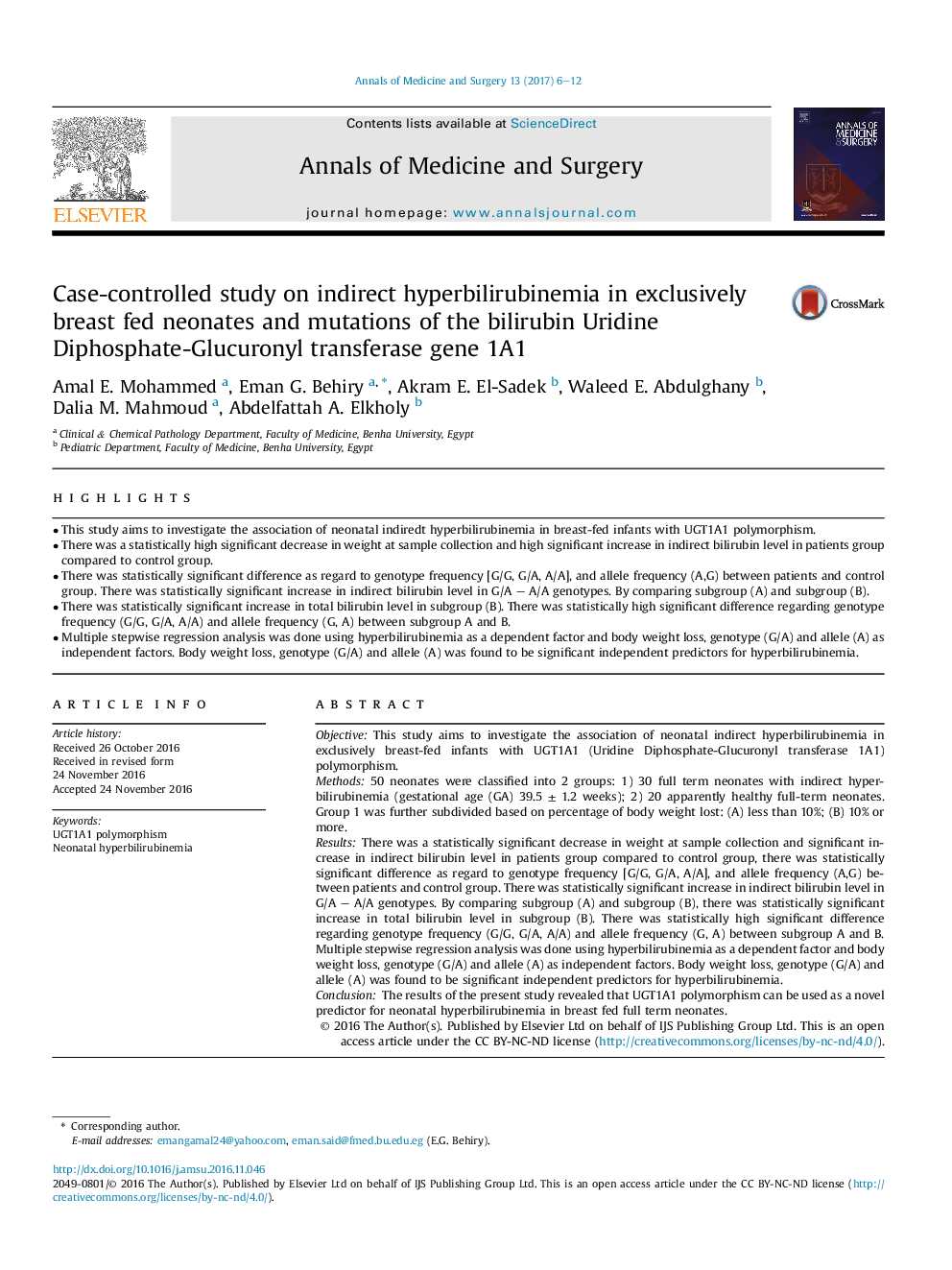| کد مقاله | کد نشریه | سال انتشار | مقاله انگلیسی | نسخه تمام متن |
|---|---|---|---|---|
| 5722974 | 1608914 | 2017 | 7 صفحه PDF | دانلود رایگان |

- This study aims to investigate the association of neonatal indiredt hyperbilirubinemia in breast-fed infants with UGT1A1 polymorphism.
- There was a statistically high significant decrease in weight at sample collection and high significant increase in indirect bilirubin level in patients group compared to control group.
- There was statistically significant difference as regard to genotype frequency [G/G, G/A, A/A], and allele frequency (A,G) between patients and control group. There was statistically significant increase in indirect bilirubin level in G/A - A/A genotypes. By comparing subgroup (A) and subgroup (B).
- There was statistically significant increase in total bilirubin level in subgroup (B). There was statistically high significant difference regarding genotype frequency (G/G, G/A, A/A) and allele frequency (G, A) between subgroup A and B.
- Multiple stepwise regression analysis was done using hyperbilirubinemia as a dependent factor and body weight loss, genotype (G/A) and allele (A) as independent factors. Body weight loss, genotype (G/A) and allele (A) was found to be significant independent predictors for hyperbilirubinemia.
ObjectiveThis study aims to investigate the association of neonatal indirect hyperbilirubinemia in exclusively breast-fed infants with UGT1A1 (Uridine Diphosphate-Glucuronyl transferase 1A1) polymorphism.Methods50 neonates were classified into 2 groups: 1) 30 full term neonates with indirect hyperbilirubinemia (gestational age (GA) 39.5 ± 1.2 weeks); 2) 20 apparently healthy full-term neonates. Group 1 was further subdivided based on percentage of body weight lost: (A) less than 10%; (B) 10% or more.ResultsThere was a statistically significant decrease in weight at sample collection and significant increase in indirect bilirubin level in patients group compared to control group, there was statistically significant difference as regard to genotype frequency [G/G, G/A, A/A], and allele frequency (A,G) between patients and control group. There was statistically significant increase in indirect bilirubin level in G/A - A/A genotypes. By comparing subgroup (A) and subgroup (B), there was statistically significant increase in total bilirubin level in subgroup (B). There was statistically high significant difference regarding genotype frequency (G/G, G/A, A/A) and allele frequency (G, A) between subgroup A and B. Multiple stepwise regression analysis was done using hyperbilirubinemia as a dependent factor and body weight loss, genotype (G/A) and allele (A) as independent factors. Body weight loss, genotype (G/A) and allele (A) was found to be significant independent predictors for hyperbilirubinemia.ConclusionThe results of the present study revealed that UGT1A1 polymorphism can be used as a novel predictor for neonatal hyperbilirubinemia in breast fed full term neonates.
Journal: Annals of Medicine and Surgery - Volume 13, January 2017, Pages 6-12